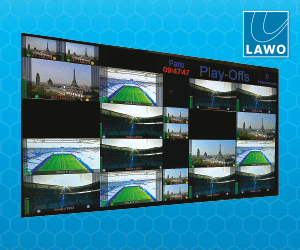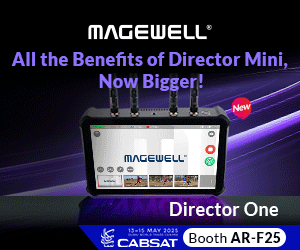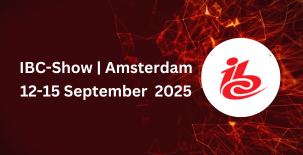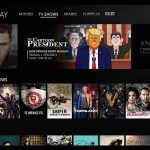Broadcast consultant Lesley Marr talks about her HD experience with Richard Brooking. How would you describe the HDTV experience? Lesley Marr: For me, its the sound, not the picture. The picture is better, its clearer, sharper, and yes, thats great. But when you watch something with 5.1 surround sound, it brings the pictures to […]
Broadcast consultant Lesley Marr talks about her HD experience with Richard Brooking.

How would you describe the HDTV experience?
Lesley Marr: For me, its the sound, not the picture. The picture is better, its clearer, sharper, and yes, thats great. But when you watch something with 5.1 surround sound, it brings the pictures to life. Im not sure everyone has the ability to have the 5.1 experience, but it really gives it the edge over SD. So HD without the sound? Dont bother!
How long have you been working with HD and what infrastructural changes did you have to make?
Marr: I started in 2003 back at Technicolor. We were launching the first Discovery HD channel. A lot of the content came out of the States; it was already shot in HD, originated in HD, and that opened our eyes to what we needed to do to manage it.
We launched a channel quite quickly; got the content on air, and we had to cope with the differences with upgrading some of the SD content, comparing how that looked on the screen and whether it would concern the viewer. We looked at how to address and channel manage that. So thats where I first got involved.
Then we launched a few more HD channels, and I joined BSkyB where HD was already quite well established.
How smooth was your migration to HD?
Marr: It was a new challenge, but I kept asking the question, whats the difference for us in operations? What do we need to do? How do we need to get fit for this?
And, in terms of processing, there was quite a lot to do but it wasnt too difficult.
Whats your opinion about moving to file-based production with HD?
Marr: Working out HD workflows actually isnt that different from SD workflows, but the throughput and the time to do things is different. I think the biggest challenge there was really the file formats. Plus one client wants to deliver one format to us, and somebody else wants to deliver a different file format out, so how do we do that?
Whats involved? How much time does it take? And actually being a facility here at ITFC, we work for many different clients; we have to be very agile and actually do what the client wants us to do. Otherwise, we wont get the contract.
And thats tough, but we have to make it work, and really, its training on the job more than anything. Talk to the people in the industry and the people that have done it before. I think sharing experiences is the best way to deal with things like that.
Whats difficult is this hybrid working, this transition where in at the moment were working both with tape and with file, and with HD, and with SD. Thats a treble, quadruple whammy!! Particularly for us, we have hundreds of different workflows. A tape in a file out, SD in a file out in HD, a tape in HD a file out in HD, a tape in HD and a tape out in SD.
So all these different scenarios makes things more complicated, it takes longer, and its not very profitable to work that way, so the sooner we move to tapeless, the better. I think again HD adoption will push it further.
What advice would you give to broadcasters moving to HD?
Marr: Talk to people, look at case studies and travel. I think were all very open about how we do things and we want to share what weve done and what weve learnt, because it makes it easier for someone else.
Im more than happy to share what weve done, and I think all the broadcasters in the UK are, particularly are up for that because, theres probably something we can learn from the people of the Middle East.
That way, we share things that we do well, and things that we do badly, and lessons learnt are just fantastic because, if I can say to somebody, we did this, it didnt quite work, and we learnt that as part of the project, then thats one thing that they dont have to jump over. Therere always hurdles to jump over and things to learn, and things change all the time, and every challenge is different, but I think a great way to learn is to share experiences.
Whats the next big thing?
Marr: What does the future hold? Thats a toughie. We think its one thing, then it morphs into something else, because technology is now really moving at a pace. Things can still catch us out. Id like to go back to the point of being agile because I think then youre less likely to get caught out.
What will people be doing? How will they be watching television? Its got to be mobile! Its got to be more user-generated content. Were working a lot more with metadata, capturing all sorts of information that you wouldnt even have thought of five years ago. I think the users are becoming much more involved in how we make television, and I think thats particularly going to change. And we need to adapt to bring that on board into our systems and our operations and our workflows. And thats what we need to watch out for. I think.
This interview was conducted by Richard Brooking, marketing manager EMEA of Tektronix, and edited by BroadcastPro ME for publication.
Lesley Marr
Lesley Marr is a broadcast media specialist with broad experience at senior manager/ company director level from small start-up businesses to FTSE 100, and across advertising; production; post-production; new media and broadcasting. She is the founder of a specialist consultancy – Fast Tortoise Ltd and is senior operations director at ITFC and responsible for the entire operation and driving change to continually develop the business around digital and file-based workflows. Prior to this, Marr was at BSkyB as a programme director, leading Skys delivery and transformation programme.
















































































